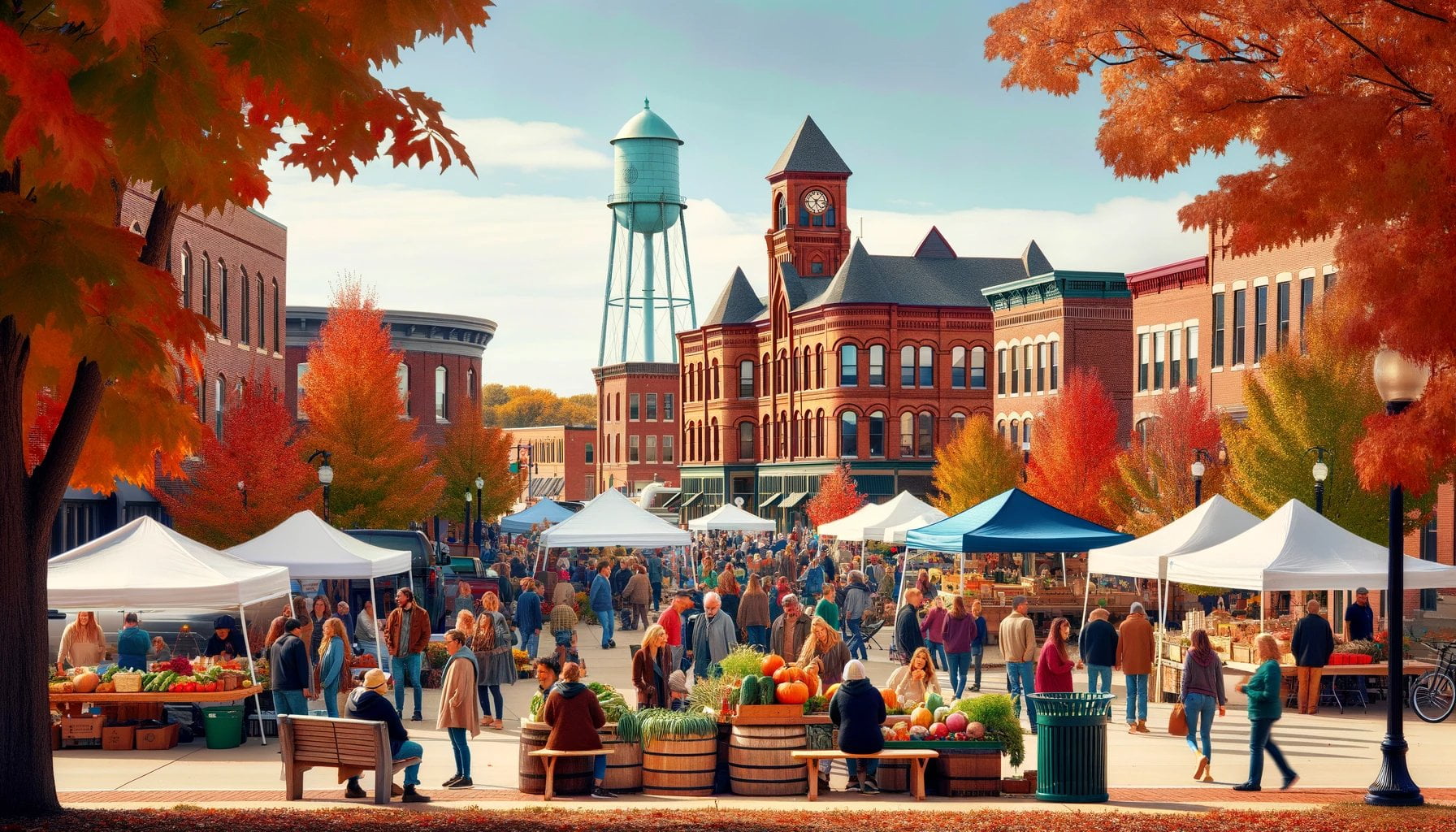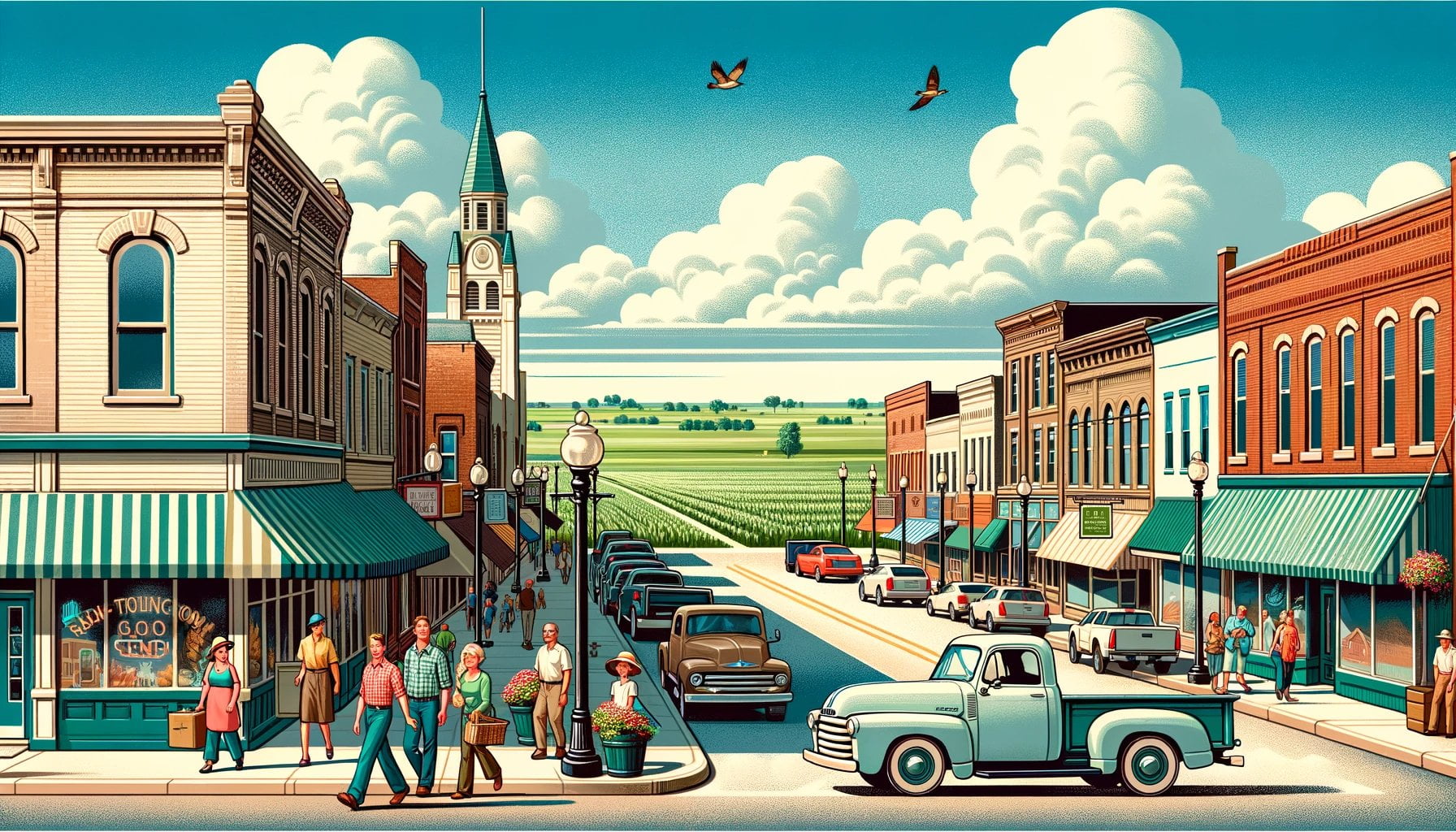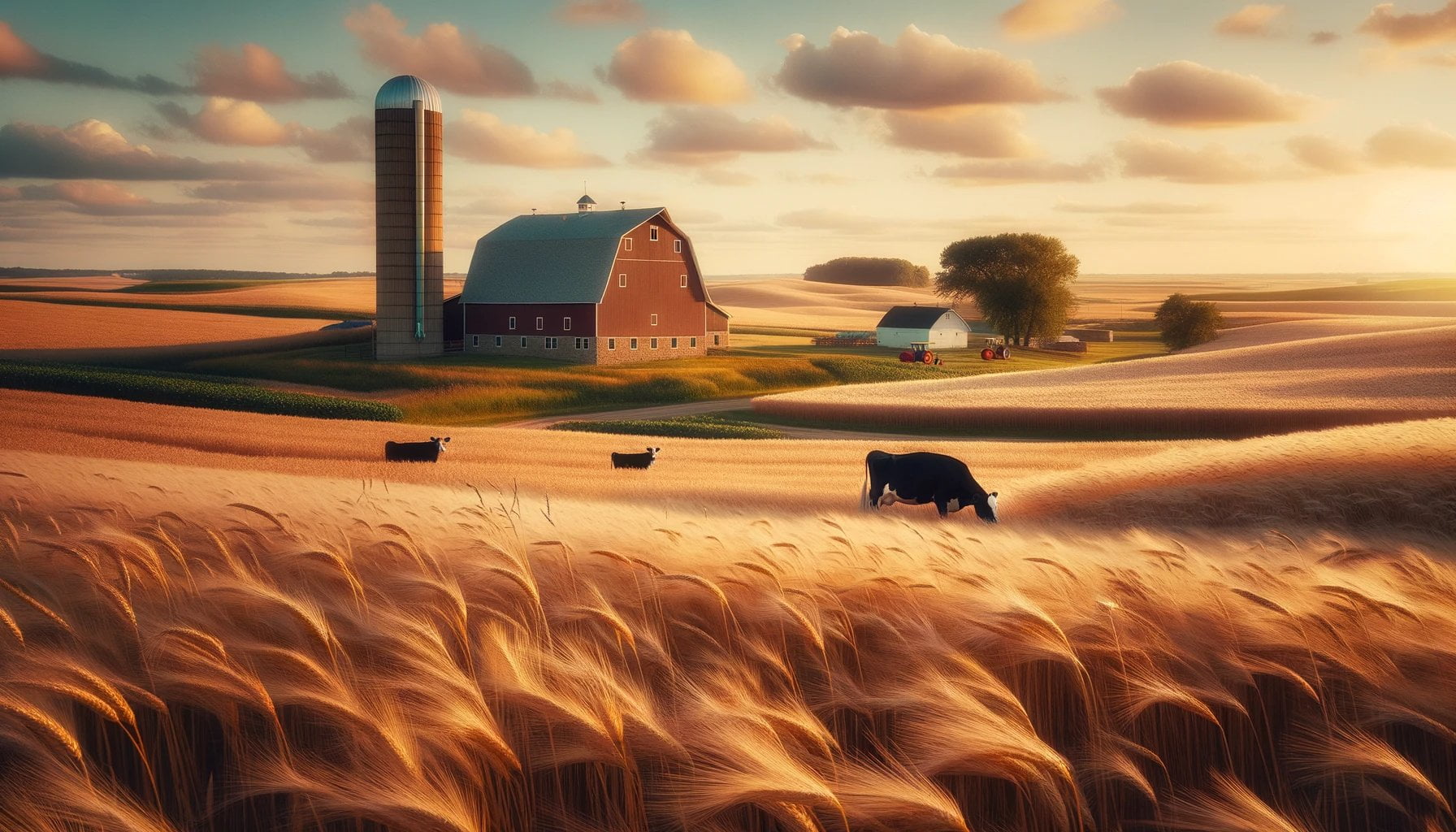The Midwest region of the United States is a treasure trove of distinctive allure waiting to be explored. From its rich history and iconic landscapes to its vibrant arts scene and warm hospitality, the Midwest encapsulates the heart of America. Join us on a journey as we unveil the unique wonders of this captivating region in our article, “Unveiling the Midwest: Discovering the Region’s Distinctive Allure.”

Key Takeaways:
- The Midwest region is located in the northern and central part of the United States, between the Appalachian and Rocky Mountains. It is bordered by the Ohio River to the south and Canada to the north.
- Iconic rivers like the Mississippi and Missouri flow through multiple Midwest states, and the Great Lakes (including Lake Superior, Lake Michigan, and Lake Huron) touch six Midwest states, making them significant geographical features of the region.
- The Midwest is often called “America’s Heartland” because of its central location and historical role in the nation’s manufacturing and farming sectors.
- The region is a mix of big commercial cities and small towns, representing a broad cross-section of American life.
- With over 34 million workers, the Midwest has a significant impact on the country’s economy.
What is the Midwest region known for?
The Midwest region of the United States holds a unique allure that sets it apart from other parts of the country. This vast and diverse region, often referred to as “America’s Heartland,” is known for its rich history, iconic landscapes, vibrant arts scene, and warm hospitality of its inhabitants. Let’s delve into what makes the Midwest truly distinctive.
Geography: A Tapestry of Landscapes
When it comes to geography, the Midwest boasts a mesmerizing blend of features. Located in the northern and central part of the United States, between the Appalachian and Rocky Mountains, the region offers a varied terrain that captures the imagination. Picture rolling plains that stretch as far as the eye can see, dotted with charming farms and picturesque small towns. And let’s not forget the iconic rivers that traverse the Midwest, including the mighty Mississippi and Missouri Rivers. These majestic waterways contribute to the region’s beauty and serve as vital transportation routes.
But it doesn’t end there. The Midwest also embraces the awe-inspiring Great Lakes, which touch the shores of six states. The vastness of Lake Superior, the scenic beauty of Lake Michigan, and the mesmerizing expanse of Lake Huron are just a few examples of the region’s natural treasures. These Great Lakes not only attract visitors with their stunning vistas but also support numerous recreational activities and have a significant impact on the region’s economy.
Nicknames and Importance: America’s Heartland
The Midwest earned its nickname, “America’s Heartland,” for good reason. Positioned at the core of the nation, the region holds historical significance and embodies the essence of American values. It played a pivotal role in shaping the country’s identity, particularly in the manufacturing and farming sectors.
Within the Midwest, you’ll discover a blend of big commercial cities and quaint towns that showcase the essence of American life. From the bustling streets of Chicago to the cozy charm of small Midwestern communities, this region truly represents a broad cross-section of the country.
Moreover, the Midwest’s economic impact cannot be underestimated, with over 34 million hardworking individuals contributing to the nation’s economy. From manufacturing and agriculture to technology and healthcare, the Midwest stands as a powerhouse, forging ahead in various industries while maintaining its reputation as the heart of America.
Conclusion
When it comes to the Midwest region, its allure lies in a combination of factors that make it undeniably captivating. From its remarkable geography, encompassing rolling plains, iconic rivers, and the breathtaking Great Lakes, to its pivotal role in American history and economy, the Midwest is a true gem nestled in the heart of the country. With its warm hospitality, vibrant arts scene, and rich cultural heritage, the Midwest invites you to uncover its many wonders and experience the distinctive allure that makes it so special.
Sources:
– Community Literacy (n.d.). “What Is The Midwest Region?” [Online] Available at CLJcommunityliteracy.org/what-is-the-midwest-region/
– Britannica (1998). “Midwest | History, States, Map, Culture, & Facts” [Online] Available at www.britannica.com/place/Midwest
The Midwest region is full of interesting facts that you may not know! Want to discover 4 facts about the Midwest region? Click here to find out more: 4 facts about the Midwest region.
Ever wondered what makes the Midwest unique? Get ready to uncover all its secrets! Click here to explore what is unique about the Midwest: What is unique about Midwest?.
Curious about the size of the Midwest region? Prepare to be amazed! Click here to learn just how large the Midwest region is: How large is the Midwest region?.
Thriving arts and cultural scene
The Midwest region of the United States may not always be the first place that comes to mind when considering vibrant arts and culture, but it is a hidden gem worth exploring. From bustling cities to quaint towns, the Midwest is teeming with artistic expression and cultural experiences that are sure to leave a lasting impression.
Uncovering Artistic Treasures
The Midwest is home to a thriving arts scene that often goes unnoticed in national media. In both urban and rural areas, you can find artist-run gallery spaces that offer a glimpse into the creativity and talent of local artists. Despite facing pressure from suburban development and other external factors, these art communities continue to flourish, contributing to the rich cultural landscape of the region.
To truly understand the Midwest’s thriving arts and cultural scene, one must delve beyond the surface and explore the unique offerings each state has to offer. From the towering skyline of Chicago, Illinois, known for its iconic architecture and world-class museums, to the vibrant arts and cultural scene of Milwaukee, Wisconsin, there is no shortage of artistic treasures to discover.
Immersed in Creativity
The Midwest region is a haven for artists, musicians, and performers alike. Some of the most notable art museums can be found in the Midwest, offering visitors the opportunity to explore a vast collection of artistic masterpieces. Museums like the Art Institute of Chicago and the Walker Art Center in Minneapolis showcase works from renowned artists and contribute to the preservation and celebration of culture within the region.
If you’re looking for a more immersive artistic experience, the Midwest hosts a variety of festivals and events throughout the year. From musical extravaganzas like Summerfest in Milwaukee to art fairs that transform small towns into open-air galleries, there’s something for every art enthusiast to indulge in.
A Blend of Tradition and Innovation
What sets the Midwest’s arts and cultural scene apart is its ability to seamlessly blend tradition with innovation. Across the region, you’ll find artists who draw inspiration from their Midwestern roots while embracing contemporary artistic movements. This fusion creates a unique and exciting atmosphere where traditional art forms intertwine with modern expressions.
The Midwest’s commitment to preserving and celebrating its cultural heritage is evident in its investment in arts education and community initiatives. Many Midwest cities offer artist grants, scholarships, and residency programs that support both emerging and established artists, ensuring that creativity continues to thrive for generations to come.
Key Takeaways:
- The Midwest region of the United States is home to a vibrant arts and cultural scene that often goes unnoticed but is rich in artistic expression and creativity.
- Artist-run gallery spaces in both urban and rural areas contribute to the region’s cultural landscape, despite facing external pressures.
- Notable art museums, such as the Art Institute of Chicago and the Walker Art Center, showcase a diverse range of artistic masterpieces.
- Festivals and events throughout the Midwest provide immersive artistic experiences for visitors throughout the year.
- The Midwest’s arts and cultural scene seamlessly blends tradition with innovation, creating a unique and exciting atmosphere for artistic expression.
- The region’s commitment to arts education and community initiatives ensures that creativity continues to thrive in the Midwest.
Sources:
– Family Destinations Guide: What Is The Midwest Famous For? Iconic Foods and Landmarks
– Midwest Museums: Thriving, Not Surviving: Art Communities in the Midwest
Friendly and Hospitable Locals
The Midwest region of the United States is renowned for its friendly and hospitable locals. Whether you’re exploring the rolling plains, charming farms, or picturesque small towns, you’ll encounter warm smiles and welcoming attitudes at every turn. This aspect of Midwest culture adds to the region’s distinctive allure, creating an inviting atmosphere for residents and visitors alike.
Genuine Connections and Warm Hospitality
In the Midwest, friendliness and hospitality are deeply rooted in the region’s values. The locals take pride in creating genuine connections and going the extra mile to make others feel at home. From striking up conversations with strangers to offering assistance to those in need, the Midwest is known for its sense of community and genuine care for others.
A Welcoming Spirit in Every City and Town
Whether you’re exploring big commercial cities or quaint towns, the Midwest’s welcoming spirit is evident everywhere. Cities like Columbus, Ohio; Charleston, South Carolina; and Minneapolis/St. Paul, Minnesota have earned reputations as some of the friendliest cities in the region. Here, you’ll find locals who are quick to offer recommendations, strike up conversations, and make you feel like a part of the community.
Celebrating Traditions and Creating New Connections
In the Midwest, traditions are cherished, and locals take pride in sharing their cultural heritage with others. Festivals and events throughout the region provide opportunities for visitors to experience the Midwest’s warm hospitality firsthand. Whether it’s a lively music festival, a charming farmers’ market, or a community gathering, these events showcase the region’s friendly locals and their commitment to creating new connections.
A Impactful Impression
One of the most powerful aspects of the Midwest’s friendly and hospitable locals is the lasting impression they make on visitors. The warm smiles, genuine conversations, and acts of kindness create a sense of belonging and leave a lasting impact on those who experience it. Whether you’re a first-time visitor or a seasoned traveler, the Midwest’s friendly locals will make you feel like a part of their community.
Key Takeaways:
- The Midwest region of the United States is known for its friendly and hospitable locals.
- Genuine connections and warm hospitality are deeply rooted in Midwest culture.
- Cities like Columbus, Ohio; Charleston, South Carolina; and Minneapolis/St. Paul, Minnesota are recognized as some of the friendliest cities in the Midwest.
- The Midwest’s welcoming spirit is evident in every city and town, creating an inviting atmosphere for residents and visitors alike.
- Festivals and events in the region provide opportunities to experience the Midwest’s warm hospitality firsthand.
Citations:
– Emily Appelbaum. “What Is The Midwest Famous For? Iconic Foods and Landmarks.” Family Destinations Guide. Retrieved from here.
– “For a Great Time, Visit The Great Midwest | Visit The USA.” Visit The USA. Retrieved from here.
Historical Significance and Preservation
The Midwest region of the United States is not only known for its picturesque landscapes and warm hospitality but also for its historical significance and preservation efforts. From ancient archaeological sites to landmarks that played pivotal roles in American history, the Midwest is a treasure trove of historical gems that have been preserved for future generations to appreciate and learn from.
Landmarks and Sites of Historical Significance
The Midwest is home to numerous landmarks and sites that hold great historical importance. Let’s take a closer look at some of these sites:
- Blue Earth County Courthouse in Mankato, Minnesota: Built in 1866, this courthouse stands as a testament to the region’s rich history and architectural heritage [^3].
- John Chapman Archaeological Preserve: Located in the upper Midwest, this site is an important late prehistoric archaeological site, providing insights into the region’s ancient inhabitants [^6].
- Cahokia Mounds: Situated near Collinsville, Illinois, this National Historic Landmark was built and occupied by Native Americans from AD 700-1400. It is the largest archaeological site of the Mississippian culture [^7].
- The Gateway Arch in St. Louis, Missouri: A symbol of westward expansion, this national monument holds significant historical and cultural value [^2].
- Chimney Rock in Morrill County, Nebraska: This remarkable natural rock formation served as a landmark for pioneers during the westward migration, making it an important historical site [^2].
- Grotto of The Redemption in West Bend, Iowa: Created by a Catholic priest over several decades, this religious shrine and complex of grottos showcases the region’s cultural heritage [^2].
- Chicago Theatre in Chicago, Illinois: With its iconic marquee and architectural significance, this historic theater is a beloved cultural landmark in the Midwest [^2].
Importance of Preservation and Cultural Impact
Preserving these historical landmarks is crucial for maintaining the cultural heritage of the Midwest and promoting tourism. These sites not only serve as reminders of the region’s past but also contribute to its regional identity. Through preservation efforts, these landmarks continue to have a cultural impact and provide valuable insights into the history and development of the Midwest [^5].
Key Takeaways:
– The Midwest is home to numerous landmarks and sites of historical significance.
– Preservation efforts are essential for maintaining the region’s cultural heritage.
– Landmarks such as Blue Earth County Courthouse, Cahokia Mounds, and The Gateway Arch hold great historical and cultural value.
– The preservation of these sites ensures their continued cultural and educational impact for future generations.
References
[^2]: WorldAtlas. “10 Unique National Historic Sites of the United States: Midwest.”
[^3]: John Misa. “Blue Earth County Courthouse – Mankato, Minnesota.” Culture Trip.
[^5]: Midstory. “What is the Midwest?”
[^6]: The Archaeological Conservancy. “Midwestern Region – The Archaeological Conservancy.” link.
[^7]: U.S. National Park Service. “Midwest Region’s Only World Heritage Site…and a Promise of …”

FAQ
Q1: What is the Midwest region known for?
A1: The Midwest region of the United States is known for its iconic foods, landmarks, and thriving arts and cultural scene. It is home to bountiful art communities, dramatic landscapes, and unique man-made creations.
Q2: How many states are included in the Midwest region?
A2: The Midwest region consists of twelve states: Illinois, Indiana, Iowa, Kansas, Michigan, Minnesota, Missouri, Nebraska, North Dakota, Ohio, South Dakota, and Wisconsin.
Q3: What are some famous landmarks in the Midwest?
A3: The Midwest is home to several famous landmarks, including Mount Rushmore, Willis Tower, Blue Earth County Courthouse, Cahokia Mounds, the Gateway Arch, Chimney Rock, and the Chicago Theatre.
Q4: What are some popular destinations to visit in the Midwest?
A4: Minneapolis, Minnesota; Milwaukee, Wisconsin; Chicago, Illinois; and Missouri are popular destinations in the Midwest. These cities offer a mix of food, history, architecture, and vibrant arts and cultural experiences.
Q5: What is the significance of preserving historical landmarks in the Midwest?
A5: Preserving historical landmarks in the Midwest is crucial for maintaining the region’s cultural heritage and promoting tourism. These sites provide a glimpse into the history and development of the Midwest and contribute to its regional identity.
- Guatemala vs. Costa Rica: Plan Your Trip Smartly - April 16, 2025
- Master Types of Pumps: Ultimate Guide to Selection - April 16, 2025
- Unlock Types of Makeup Secrets: Master Any Look Now - April 16, 2025
















